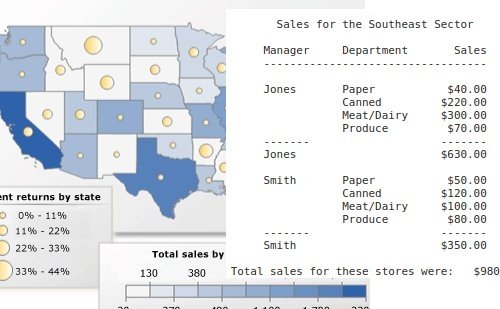Summary: Every great analyst knows the core numbers like the back of their hand. Build yourself a cheat sheet (whether it’s a list of stats or an interactive dashboard) and keep it up-to-date. The more you can internalize the numbers, the smarter you’ll look (and be).
The #1 thing that differentiates a great analyst from a data jockey / data puker is their insight into the numbers. My favorite math teacher in high school made it clear that he could teach his 10 year old niece calculus – all the equations, how to take a limit, derivatives, integrals, maybe even taylor series – but she doesn’t have the background to understand what she would be computing.
An analyst rides the thin line between being a 10 year old who has memorized derivaties and being a mathematician who can apply what they know to new situations.
So how do you develop the context you need to be that great analyst: the one that everyone turns to when a tough question arises?
You cheat.
The smartest people work smarter, not harder and that’s going to be you. In order to cram important numbers into your head you have to follow a few steps:
- Identify what are the important numbers.
- Confirm that these are really important numbers.
- Pull those numbers in a way that can be repeated and consistently updated.
- Memorize those numbers using mnemonics.
OR
- Use those numbers until it’s like muscle memory.
Identify the Important Numbers
Just like in school, the most important numbers are the ones most repeated and the ones you don’t see coming.
The former is easy. You just have to be observant. Some common ones you’ll likely hear:
- Total Sales
- Total Gross Profit
- Average Response Rate
- Average Order Value
- # of Customers you have
- Market share / Penetration rates / Share of wallet
- % of Customers purchasing the next year
But there will be numbers that sneak up on you. They’re the current hot topics of your manager or CEO. There’s not much you can do other than ask around. Find other analysts who are providing those numbers and create a feedback loop. As you find out some new information, you pass it to them and vice versa.
Confirm These Are Important Numbers
There will likely be more false positive “important numbers” than true positives. You’ll often find out that the one metric that is on every report is actually completely unimportant to your manager.
This stage is mostly opinion gathering.
- Does anyone use this number to help gauge or make decisions?
- Do other analysts and managers agree on how number ‘X’ is reported?
Pull the Numbers Repeatably

This is a critical step. Running the numbers once is great. You’re a dozen steps ahead of other analysts. Setting up several queries or worksheets or programs to pull these numbers at the push of a button helps you to quickly react to changes in those baseline numbers.
If you’re watching the share of wallet and you notice a significant change, you might be the first one to notice.
If you can consistently re-run your cheat sheet and spot differences, you’ll be a step ahead of other analysts and business leaders.
You might
Memorize Those Numbers
There are two ways of memorizing these important numbers. As described above, you could use a mnemonic device to cement those numbers into your head.
The slightly easier, but less consistent method would be to use these numbers again and again. Talk about these numbers. Write about these numbers. Drill into the raw data behind the numbers.
Ultimately, the brute force approach of using the numbers frequently takes a fair amount of time.
Building a mental “picture” of your important numbers can be challenging if you haven’t tried it before.
The Cheat Sheet is going to help make you look brilliant in the face of questions from managers and CEOs. The more numbers you know off the top of your head, the faster you can check to see if mistakes were made in a report or if there’s something significant in your results.
